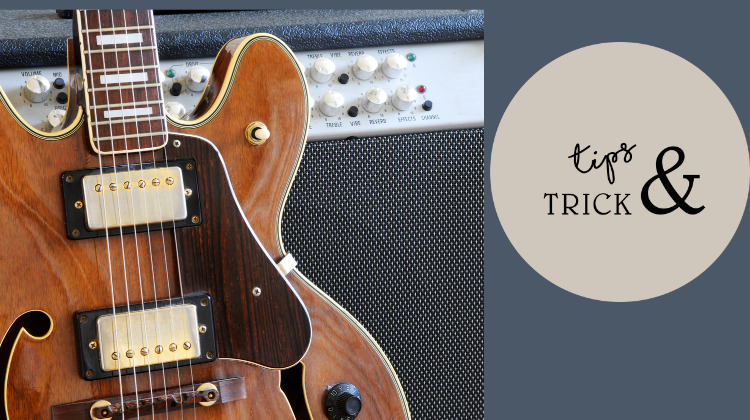Guitars are one of the most popular musical instruments worldwide, with a rich history and diverse styles. One of the most essential components of a guitar is the strings, which produce a sound that is amplified by the body and played by the musician.
In this blog post, we will explore the number of strings that guitars have, the types of guitars with different string configurations, and the benefits of each.
How Many Strings Do Guitars Have
Most guitars have six strings, but there are also guitars with four, seven, eight, ten, and even twelve strings. However, the most common type of guitar that people are familiar with is the six-string guitar. The strings on a six-string guitar are usually tuned to E-A-D-G-B-E, with the thickest string (the low E string) at the top and the thinnest string (the high E string) at the bottom.
Number of Strings
Most guitars have six strings, which are typically made of steel or nylon. These strings are tuned to specific notes, with the lowest-pitched string being the thickest and the highest-pitched string being the thinnest. The standard tuning for a six-string guitar is E-A-D-G-B-E, with the lowest string being an E note and the highest string being an E note an octave higher.
However, guitars can also have fewer or more than six strings. For example, a four-string bass guitar is commonly used in rock and jazz music to produce low, heavy tones. On the other hand, a twelve-string guitar has six pairs of strings, with each pair tuned to the same note but an octave apart. This configuration produces a rich, shimmering sound that is often used in folk and rock music.
Types of Guitars
Acoustic Guitars
They are a popular type of guitar that uses only acoustic means to produce sound. Acoustic guitars are also referred to as ‘steel-string guitars’, due to their typically metal strings. Steel string acoustic guitars typically have six strings, though some models may have twelve.
Electric Guitars
These are guitars that use pickups to convert the vibrations of the strings into an electrical signal that is then amplified. They typically have a solid body, as opposed to the hollow body of an acoustic guitar. Electric guitars may have six, seven, eight, or more strings. Electric guitars with seven or more strings are often used in metal and djent music.
Classical Guitars
Classical guitars, also known as ‘Spanish guitars’, are a type of guitar that uses nylon strings. These guitars are commonly used in classical music, as well as in flamenco music. Classical guitars typically have six strings.
Bass Guitars
These are a type of guitar that produces low-pitched tones. Bass guitars typically have four, five, or six strings. The lower-pitched strings are typically thicker and longer than the higher-pitched strings. Bass guitars are commonly used in rock, funk, and jazz music.
Benefits of Different String Configurations
Six-String Guitars
Six-string guitars are the most common type of guitar, and are used in a wide variety of musical genres. The six-string configuration is versatile and allows for a wide range of notes and chords to be played. Six-string guitars are also typically more affordable than guitars with more strings.
Twelve-String Guitars
Twelve-string guitars produce a rich, full sound that is well-suited to folk and rock music. The doubled strings create a chorus-like effect that is distinct from the sound of a standard six-string guitar. Twelve-string guitars can also be used to add depth and complexity to solo performances.
Four-String Bass Guitars
They are commonly used in rock and jazz music to produce low, heavy tones. The four-string configuration is simpler and easier to play than guitars with more strings, making it a popular choice for beginner bass players.
Seven and Eight-String Guitars
Seven and eight-string guitars are used in metal and djent music to produce heavy, low-pitched tones. The additional strings allow for more complex chords and scales to be played, but also require greater skill and dexterity to play effectively.

Tips and Tricks:
If you’re interested in learning to play guitar or just want to expand your knowledge on the topic, here are some tips and tricks related to the number of strings on guitars:
tips
- Choose the right guitar for your needs: As we’ve seen, guitars come in a variety of string configurations, each with its own benefits and drawbacks. Consider what type of music you want to play and what sound you want to achieve before choosing a guitar.
- Practice regularly: No matter how many strings your guitar has, the key to becoming a proficient player is practice. Set aside a regular time each day to practice, even if it’s only for a few minutes.
- Learn the basics: Regardless of the number of strings on your guitar, it’s important to learn the basics of chord shapes, fingerpicking, and strumming patterns. These foundational skills will serve you well no matter what type of music you play.
- Experiment with different tunings: Although the standard tuning for a six-string guitar is E-A-D-G-B-E, there are many other tunings that can produce unique and interesting sounds. Experiment with different tunings to find what works best for your style of music.
- Use high-quality strings: No matter how many strings your guitar has, it’s important to use high-quality strings that produce a clear and consistent sound. Replace your strings regularly to maintain the best possible sound.
- Consider taking lessons: If you’re new to playing guitar, consider taking lessons from a professional teacher. A good teacher can help you develop proper technique, learn new skills, and stay motivated to practice regularly.
- Have fun! Playing guitar should be an enjoyable and rewarding experience. Don’t get too caught up in perfecting your technique or achieving a specific sound. Enjoy the process of learning and experimenting with your instrument.
FAQ
A: Yes, guitars can have more than six strings. For example, a twelve-string guitar has six pairs of strings, and some electric guitars have seven or eight strings.
A: Twelve-string guitars produce a rich, full sound that is well-suited to folk and rock music. The doubled strings create a chorus-like effect that is distinct from the sound of a standard six-string guitar. Twelve-string guitars can also be used to add depth and complexity to solo performances.
? A: Consider what type of music you want to play and what sound you want to achieve before choosing a guitar. Each type of guitar with different string configurations has its own benefits and drawbacks.
Conclusion
In conclusion, most guitars have six strings, but there are also guitars with four, seven, eight, ten, and even twelve strings. The number of strings on a guitar can have a significant impact on its sound and playability, and different styles of music often call for different types of guitars with varying numbers of strings. Whether you’re a beginner or an experienced player, it’s important to choose a guitar with the right number of strings for your needs and skill level. With the right instrument and plenty of practice, you can create beautiful music and enjoy the many benefits of playing the guitar.
Also read: How Much Do Handmade Guitars Sell For

StringBudget is a team of music enthusiasts who started playing with strings and decided to help beginners to master their music skills. Our goal is to provide tips and guides for beginners who are willing to improve their music skills.
We focus on string instruments like guitar, violin, ukulele, and many more. Learning and mastering an instrument is a quite tedious task and our team is working harder to provide the best solutions for beginners to gain confidence over string instruments.

